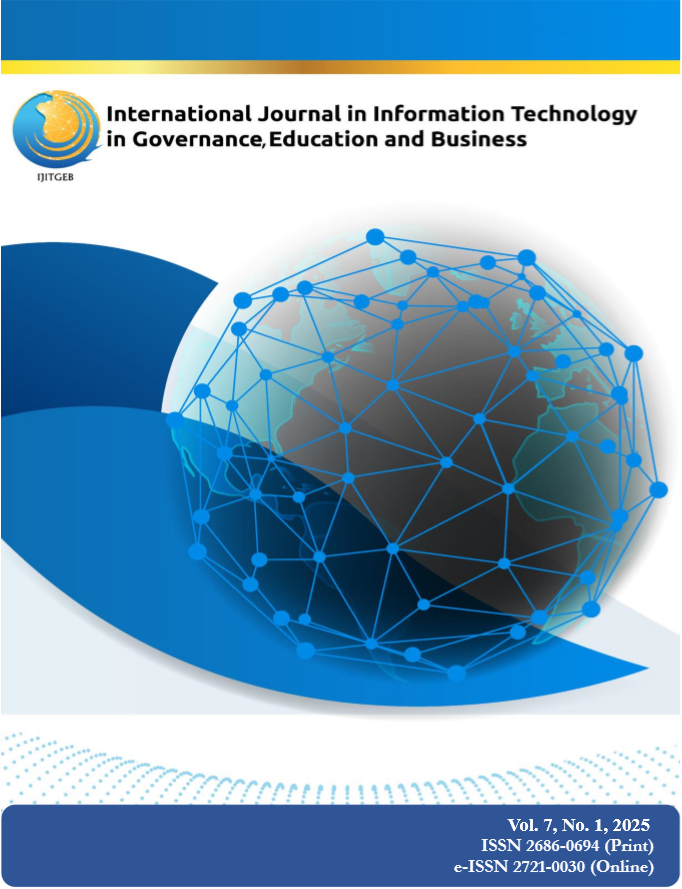iCensr: A Web Image Detection and Censorship Plugin Utilizing the YOLO Deep Learning Method
Abstract
The research introduced and developed a content moderation tool designed for Chromium-based browsers such as Google Chrome. It delved into assessing the effectiveness of YOLO v8 within iCensr, a browser plugin aimed at improving online browsing by ensuring a secure web environment. The primary objective of the plugin is to detect and censor objectionable images, including those depicting nudity, violence, and illicit drugs, across diverse websites, thus regulating content exposure online. The study evaluated the models of iCensr using Mean Average Precision (mAP). A total of 58 participants assessed the iCensr plugin through a Likert-scale survey based on ISO/IEC 25010:2023 acceptability standards. The outcomes of the evaluation suggest that iCensr is deemed "Highly Acceptable," indicating its potential to contribute to safer online interactions. The research underscores the significance of digital tools like iCensr in mitigating online risks and fostering a secure online environment for users of all ages. Additionally, the researchers recommend that future developers and researchers expand the censorship categories, implement other techniques, create a mobile version, and acquire better datasets for enhancing its functionality and effectiveness.
Received Date: April 8, 2025
Revised Date: May 2, 2025
Accepted Date: June 7, 2025
Click to Access and Download the Article:
References
- Bhalerao, C. (2023). YOLO V8: The real state-of-the-art? Medium. https://medium.com/mlearning-ai/yolo-v8-the-real-state-of-the-art-eda6c86a1b90
- Bhatti, A., Umer, M., Adil, S., Ebrahim, M., Nawaz, D., & Ahmed, F. (2018). Explicit content detection system: An approach toward a safe and ethical environment. Applied Computational Intelligence and Soft Computing, 2018, 1–13. https://doi.org/10.1155/2018/1463546
- Bicho, D., Ferreira, A., & Datia, N. (2020). A deep learning approach to identify not suitable for work images
- Boesch, G. (2023). Object detection in 2023: The definitive guide. Viso AI. https://viso.ai/deep-learning/object-detection/
- Dixon, S. J. (2023). Global daily social media usage 2023. Statista. https://www.statista.com/statistics/433871/daily-social-media-usage-worldwide/
- Facing History & Ourselves. (2016). Visual essay: The impact of propaganda. Facing History & Ourselves. https://www.facinghistory.org/resource-library/visual-essay-impact-propaganda
- Gillis, A. S., Burns, E., & Brush, K. (2023). What is deep learning and how does it work? TechTarget. https://www.techtarget.com/searchenterpriseai/definition/deep-learning-deep-neural-network
- Hussain, M. (2023). YOLO-v1 to YOLO-v8: The rise of YOLO and its complementary nature toward digital manufacturing and industrial defect detection. Machines, 11(7), 677. https://doi.org/10.3390/machines11070677
- Internet Matters. (2018). What is inappropriate content? Internet Matters. https://www.internetmatters.org/issues/inappropriate-content/learn-about-it/
- Izzah, N., Budi, I., & Louvan, S. (2018). Classification of pornographic content on Twitter using support vector machine and Naive Bayes. In 2018 4th International Conference on Computer and Technology Applications, ICCTA 2018 (pp. 156–160). Institute of Electrical and Electronics Engineers Inc. https://doi.org/10.1109/CATA.2018.8398674
- Khan, M. A., Rawan, B., & Ullah, A. (2020). Growing up with media violence and psychological trauma among youth in Pakistan. Pakistan Journal of Criminology, 12(1), 79–88.
- Kim, Y., Kim, T., & Yoo, S. E. (2022). TsCNNs-based inappropriate image and video detection system for a social network. Journal of Information Processing Systems, 18(5), 677–687.
- Kundu, R. (2023). YOLO algorithm for object detection explained [+examples]. V7 Labs
- Lin, W. H., Liu, C. H., & Yi, C. C. (2020). Exposure to sexually explicit media in early adolescence is related to risky sexual behavior in emerging adulthood. PLOS ONE, 15(4), e0230242. https://doi.org/10.1371/journal.pone.0230242
- Rath, S. (2023). YOLOv8: Comprehensive guide to state-of-the-art object detection. LearnOpenCV. https://learnopencv.com/ultralytics-yolov8/
- Severen, B. V. (2022). Top 10 dangers of the internet for children: MVS Legal. https://milwaukee-criminal-lawyer.com/what-are-the-dangers-of-using-the-internet-for-kids/
- Stubbs, J., Nicklin, L., Wilsdon, L., & Lloyd, J. (2022). Investigating the experience of viewing extreme real-world violence online: Naturalistic evidence from an online discussion forum. New Media and Society.
- Vinney, C. (2023). Here's how violent media can impact your mental health. Verywell Mind. https://www.verywellmind.com/what-is-the-impact-of-violent-media-on-mental-health-5270512
- Wu, D., Lv, S., Jiang, M., & Song, H. (2020). Using channel pruning-based YOLO v4 deep learning algorithm for the real-time and accurate detection of apple flowers in natural environments. Computers and Electronics in Agriculture, 178, 105742. https://doi.org/10.1016/j.compag.2020.105742
- Zulfiqar, S. H. (2021). Does media violence cause violence? Can exposure to violent TV shows, movies, and video games turn people aggressive and desensitized to violence? Eliva Press. https://books.google.com.ph/books?id=14w2EAAAQBAJ

This work is licensed under a Creative Commons Attribution-ShareAlike 4.0 International License.






